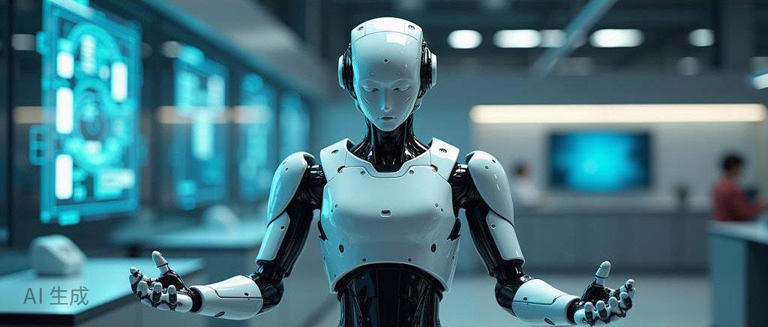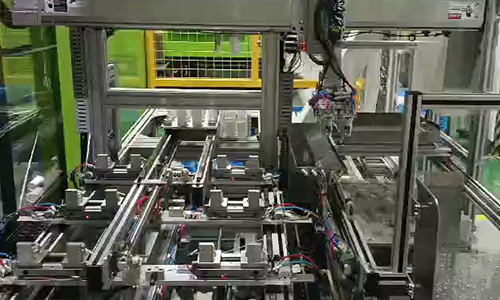
By Mei Yuanzhi
In today's era of rapid technological development, humanoid robots have become one of the most promising and attractive topics in the field of artificial intelligence. From major technology exhibitions to the capital market, the popularity of humanoid robots continues to rise, attracting widespread attention and heated discussions around the world.
In recent years, humanoid robots have made significant progress in technology and application scenarios. At the Artificial Intelligence Conference, humanoid robots from the National and Local Co-construction Humanoid Robot Innovation Center, Dahua, Fudan University, Fourier, Yushu Technology and other companies and units formed an "Eighteen King Kong" array, demonstrating excellent dynamic coordination capabilities and attracting a large number of viewers to stop and watch.
The debut of Tesla's second-generation humanoid robot Optimus in China has pushed the craze to a new height, with many investors even declaring that "2024 is the first year of humanoid robots." From the perspective of the products themselves, compared with previous years, the humanoid robots exhibited this year have made significant progress, showing a higher level in terms of appearance design, movement flexibility and intelligent interaction.
Moreover, with more and more Chinese companies joining in, the iteration speed and mass production possibility of humanoid robots have greatly increased.
However, despite these advances, there is still a long way for humanoid robots to move from laboratories to factories, from the To B field to the To C market, and then enter ordinary households.
In terms of application scenarios, the industrial manufacturing field provides a preliminary verification opportunity for the commercialization of humanoid robots. With the help of advanced visual neural networks and FSD chips, Tesla's Optimus can imitate human operations and perform complex movements such as gently holding eggs, carrying heavy objects, and sorting batteries. Its upright walking speed has also been significantly improved, and it has begun to be tested in Tesla factories.
UBTECH's humanoid robot Walker S has also reached a cooperation with FAW-Volkswagen and entered the automobile manufacturing workshop to undertake tasks such as tightening bolts, installing parts and transporting them. At the same time, it also conducted on-site "training" in many car factories to enhance its R&D capabilities and enrich product types, helping factories to improve their intelligence and unmanned levels.
Although industrial scenarios provide a certain foundation for the development of humanoid robots, in the long run, home services are the most promising application scenarios. The "Guanghua No. 1" elderly care robot displayed by Fudan University plans to carry out tests in many places to improve its ability to care for the elderly and try to promote it in a small scale; the XR4 "Xiao Zi" developed by Dahua Robotics has flexible hand operation and can complete a variety of delicate housework, but the pre-sale price of 399,000 yuan makes it difficult to enter the C-end market from the B-end market.
The complexity and openness of home service scenarios place higher demands on the research and development of humanoid robots, requiring more financial and technical support.
The development of AI technology provides key support for the intelligence of humanoid robots and becomes the last piece of the puzzle to complete humanoid robots. In home service scenarios, humanoid robots need to be able to handle various complex tasks and cope with changing environments, and the emergence of large models makes this possible. By learning from large amounts of text and images, large models provide robots with common sense knowledge, realize integrated end-to-end processing of perception, decision-making, and execution, and significantly improve the intelligence level of robots.
For example, after working with OpenAI, Figure 01 was able to accurately find edible objects in a complex pile of debris and hand them over to humans, and it was also able to automatically identify the status of the desktop and organize items, all thanks to the application of large models. OpenAI's restart of the robot project and NVIDIA's release of a number of new products that support robots all show that technology giants attach importance to the integration of AI and robotics technology. They hope to explore new business models and revenue sources by participating in the development of robotics technology.
However, the implementation of humanoid robots not only depends on the improvement of intelligence, but also faces challenges from many other key issues, including power and energy management, mechanical design and motion control, perception and perception processing, human-computer interaction and safety, cost and availability, etc. Among them, cost control is one of the key factors in achieving large-scale promotion of humanoid robots. It is generally believed in the industry that $20,000 is the cost threshold for large-scale promotion of humanoid robots, while the current hardware cost of Tesla Optimus is about $50,000 to $60,000. In the ranking of the value of its components, key components such as frameless torque motors, reducers, force sensors, and lead screws account for a high proportion and have high technical barriers. These components are not only the main direction of cost reduction, but also an important area for domestic substitution.
Taking reducers as an example, although domestic manufacturers such as Green Harmonic only account for 7% of global sales, they have broken the technical monopoly of foreign manufacturers and are constantly catching up with the international advanced level in terms of reduction ratio, rated torque, etc. In order to welcome the arrival of the humanoid robot era, Green Harmonic actively expanded its production capacity and seized market share through price wars, which not only affected the company's own performance, but also had a wide-ranging impact on the entire reducer industry ecology, reflecting the supply chain companies' high attention and firm confidence in the humanoid robot market.
In the field of lead screws, although Japanese and German companies occupy the main share of the mid-to-high-end market, domestic companies such as Wuzhou Xinchun and Best are also actively making plans, striving to break through technological barriers and achieve domestic substitution.
Judging from the performance of the capital market, the humanoid robot track has become the star sector of the market in the past three months. The Wind Humanoid Robot Index rose by as much as 83%, significantly outperforming the Shanghai Composite Index. The market value of the leading companies in the robot track, Topstar and Efort, has rapidly doubled, and many bull stocks have emerged from upstream core component suppliers.
Behind this market boom is the continuous improvement of underlying technologies based on large AI models, which provides a solid technical foundation for the development of humanoid robots. At the same time, diversified application scenarios also provide broad space for the innovation and development of humanoid robots.
According to the forecast of the institutions, the scale of the humanoid robot market in China will show a rapid growth trend in the future. By 2035, the sales volume of To B scenarios will reach 755,000 units, with a market scale of about 75.5 billion yuan; the sales volume of To C scenarios will reach 1.256 million units, with a market scale of about 62.8 billion yuan. At present, some domestic manufacturers have begun to place small batch orders, and Tesla abroad is also steadily advancing its Gen2 technology iteration and batch sales plan. The dawn of the official commercialization of humanoid robots has begun to appear.
In the humanoid robot industry chain, each link is crucial, including motion module, control module, perception module, dexterous hand, battery and other structural parts. Among them, the core parts cost of motion module accounts for a relatively high proportion, and the reducer is a key component, and its technical route and market structure still have great variables and room for development.
At present, RV reducers have advantages in performance and are suitable for heavy-load joints of humanoid robots, but their costs are relatively high; harmonic reducers have certain advantages in cost and volume. Currently, most mainstream manufacturers adopt the technical solution of harmonic reducer + planetary reducer, but which technical route will become mainstream in the future still needs further verification and selection by the market.
The development prospects of humanoid robots are broad, but they also face many challenges and uncertainties. In terms of technological breakthroughs, cost control, market promotion and expansion of application scenarios, joint efforts are needed from enterprises, scientific research institutions and governments.
With the continuous advancement of technology and the gradual maturity of the market, humanoid robots are expected to become important assistants in people's lives and work in the future, bringing tremendous changes and value to human society.






 Release time:2025-01-17
Release time:2025-01-17
 Reading:66
Reading:66
 Back to list
Back to list